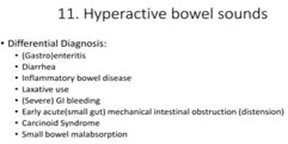A nurse is contributing to the plan of care for a client who is experiencing delirium. Which of the following interventions should the nurse recommend?
Avoid discussing the client's fears.
Offer the client several choices at mealtimes.
Remind the client of the day and time often.
Alternate daily caregivers.
The Correct Answer is C
Delirium is a state of acute confusion and cognitive impairment that can cause disorientation and difficulty with time perception. Reminding the client of the day and time frequently helps provide orientation and reduce confusion. It can help ground the client in reality and improve their understanding of their current circumstances.
A. Avoiding discussing the client's fears can hinder their ability to express and address their concerns. It is important to provide a safe and supportive environment where the client can communicate their fears and feelings.
B. Offering the client several choices at mealtimes might be overwhelming and confusing for someone experiencing delirium. It is generally better to provide structure and simplicity in their meal options, reducing decision-making demands.
D. Alternating daily caregivers can disrupt the continuity of care and increase the client's confusion. Consistency in the caregiving team can help establish a therapeutic relationship and familiarity, which can aid in managing delirium.
Nursing Test Bank
Naxlex Comprehensive Predictor Exams
Related Questions
Correct Answer is B
Explanation
The nurse should describe hyperactive bowel sounds as sounds that are loud, high-pitched and increased in frequency and intensity. They are more frequent than normal bowel sounds, with a rapid succession of sounds occurring at a rate greater than 5 to 30 sounds per minute.
Hyperactive bowel sounds can be heard in conditions such as gastroenteritis, diarrhea, and early mechanical bowel obstruction. They indicate increased bowel motility and are often associated with increased peristalsis.
To differentiate hyperactive bowel sounds from normal or hypoactive bowel sounds, the nurse can explain that hypoactive bowel sounds are decreased or absent sounds that occur when the bowel motility is decreased, such as in conditions like paralytic ileus or after abdominal surgery. Normal bowel sounds are typically soft, low-pitched, and occur at a rate of 5 to 30 sounds per minute.

Correct Answer is ["B","C"]
Explanation
The client received the prescribed antibiotic every 8 hours: This is important information as it relates to the client's medication administration and treatment plan. It allows the incoming nurse to be aware of the medication schedule and ensure continuity of care.
The client reports pain is reduced when positioned on his side: This is significant information as it informs the incoming nurse about the client's preferred position for pain management. It helps guide the nurse in providing comfort measures and appropriate positioning for the client.
The client's mother died 4 years ago from breast cancer: This information may not be considered vital for the change-of-shift report unless it directly impacts the client's current condition or ongoing care.
While it's important to document visitors and support persons, this information may not be considered crucial for the change-of-shift report unless it directly impacts the client's care or well-being.
In summary, the nurse should include information that is pertinent to the client's immediate care needs and current condition. This includes medication administration, pain management preferences, changes in condition, or any relevant information that may impact the client's care plan.
Whether you are a student looking to ace your exams or a practicing nurse seeking to enhance your expertise , our nursing education contents will empower you with the confidence and competence to make a difference in the lives of patients and become a respected leader in the healthcare field.
Visit Naxlex, invest in your future and unlock endless possibilities with our unparalleled nursing education contents today
Report Wrong Answer on the Current Question
Do you disagree with the answer? If yes, what is your expected answer? Explain.
Kindly be descriptive with the issue you are facing.
